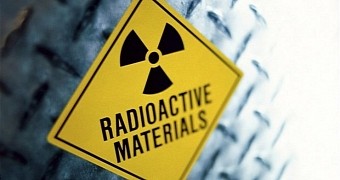By the looks of it, Japan's nuclear industry is about to pull a Lazarus and come back to life. The only difference is that, while the Bible doesn't mention any complaints regarding Lazarus' resurrection, plenty of people would very much prefer it if Japan's nuclear reactors were to remain switched off.
Contrary to what some might assume, it's not just environmental groups like Greenpeace that strongly oppose the country's plans to once again rely on nuclear power to have its energy demands met. Thus, regular folks living in Japan aren't exactly big fans of this idea either.
When and why Japan shut down its nuclear industry
Well over 3 years ago, in March 2011, Japan was hit by a magnitude-9 earthquake that was followed by a mammoth tsunami. The wave hit the country's Fukushima nuclear plant, causing it to experience a series of failures.
In a nutshell, three of the facility's nuclear reactors suffered a meltdown, and massive amounts of radioactive material leaked into the environment. Together with Chernobyl, this breakdown is considered to be one of the greatest nuclear catastrophes of all times.
Following this disaster, high officials were left with no choice but to shut down all the other nuclear reactors operating in the country or risk having people organize protests against this dangerous energy source every other week.
It's important to note that, at the time Japan pulled the plug on its nuclear power industry, the country was home to about 48 operational reactors whose combined capacity covered as much as 30% of the energy demand documented on a national scale.
Despite the fact that most of the people currently living in Japan don't really fancy nuclear power, efforts are now being made to switch the country's reactors back on and have them pump energy into the national grid.
The move is no more and no less than an attempt to cope with the rising costs of constantly importing gas and oil, and to make sure that Japan manages to meet its commitments concerning climate change and global warming.
So, which reactors will be the first to go back online?
Apparently, two reactors that are part and parcel of the country's Sendai nuclear power plant some 600 miles (965 kilometers) south-west of the city of Tokyo will be the first to be switched back on. For the time being, it's unclear when this will happen.
According to Business Green, it was just a few days ago that as many as 19 of the 26 assembly members in the city of Satsumasendai in Japan's Kagoshima Prefecture voted in favor of getting the plant's two nuclear reactors back online.
However, it will probably be a while before operator Kuyshu Electric Power passes recently established operational safety checks, obtains consent from people living in the area and moves on to actually restarting the Sendai nuclear power plant. It is expected that the reactors will go back online sometime next year.
Interestingly enough, it is understood that Japanese Prime Minister Shinzo Abe is ready and willing to let people living close to this nuclear plant have the final say when it comes to deciding whether or not the facility should be put back to work producing energy.

 14 DAY TRIAL //
14 DAY TRIAL //